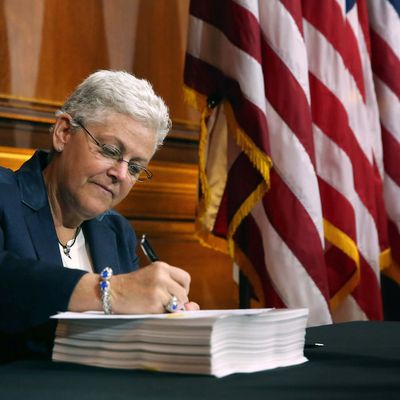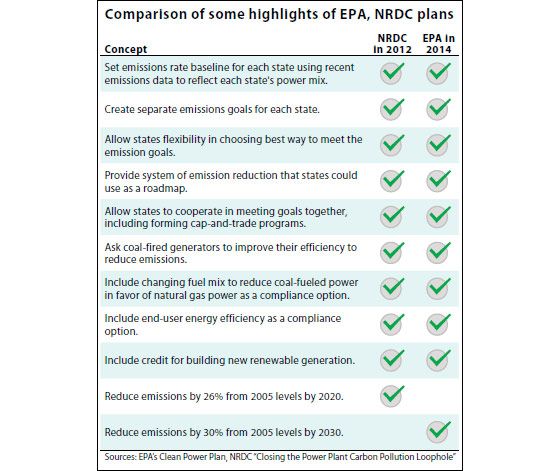
In December, 2012, the Natural Resources Defense Council released a groundbreaking plan for how the Environmental Protection Agency could regulate greenhouse gas emissions from existing power plants. The conventional wisdom before the EPA’s plan held that the agency’s only legal option involved prohibitively expensive mandates. Almost immediately after the plan came out, I somewhat accidentally learned that high-level policymakers in the Obama administration were aware of it, and — while they were cagey about it — seemed intent on crafting a plan along the lines the NRDC proposed. I wrote a story for the magazine explaining how this would work and how it would fit with the administration’s agenda.
What I suspect, but don’t know for a fact, is that the NRDC plan supplied the administration with this idea. If this is what happened, then a few policy wonks at the NRDC changed the course of history. I tried to report out the story, but ran into fierce denials from officials at the Environmental Protection Agency, who insisted that they developed the standards almost entirely independent of the NRDC. I suspected the EPA was spinning me, perhaps out of a fear that conceding such a heavy influence to the NRDC would somehow weaken their defense against the coming legal challenge. But I also lacked the reporting to countermand the EPA — which, as they pointed out to me, consisted of the people who were in the room when the regulation was made — so I dropped the story.
Coral Davenport — who, unlike me, is a fantastic reporter — went on to write that story for the New York Times, reporting that the EPA “used as its blueprint” the NRDC’s plan. The article quotes the EPA contesting that premise, and the agency has been publicly challenging it. Administrator Gina McCarthy has sent around a staff-wide email lambasting the report.
I couldn’t confirm the genesis of the EPA’s proposal solidly enough to report it as fact. The Times story does not actually contain hard proof that the NRDC plan formed the basis for the EPA’s decision. I would guess that Davenport’s sources gave her some off-the-record confirmations that she couldn’t publish. My belief that Davenport has this right is bolstered by two other things. One is that, as Eric Wolff points out, the EPA plan mirrors the NRDC plan very closely in its design:

The main difference is that the EPA’s version is weaker.
Second, the accounts the EPA provided me were at odds with what was widely known among environmentalists and the energy lobby in 2013. Those insiders knew that the EPA was working on regulations of existing power plants. The EPA painted a story of a regulatory process that worked on a much slower time frame than the one those insiders believed was occurring (and which, as noted above, I had caught wind of).
So I believe the Times’ claim, but I can’t prove it, and the Times hasn’t proven it, either. The NRDC finds itself in the awkward position of not being able to claim full credit for what probably ranks as the most important policy triumph ever recorded by an American advocacy organization.






























